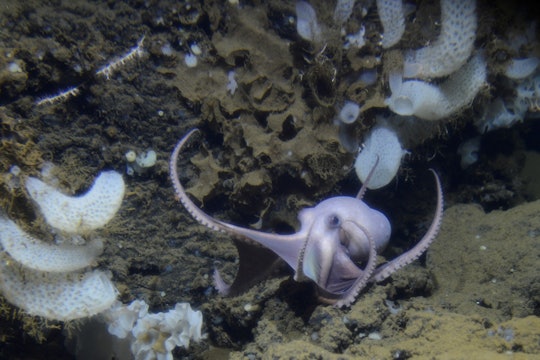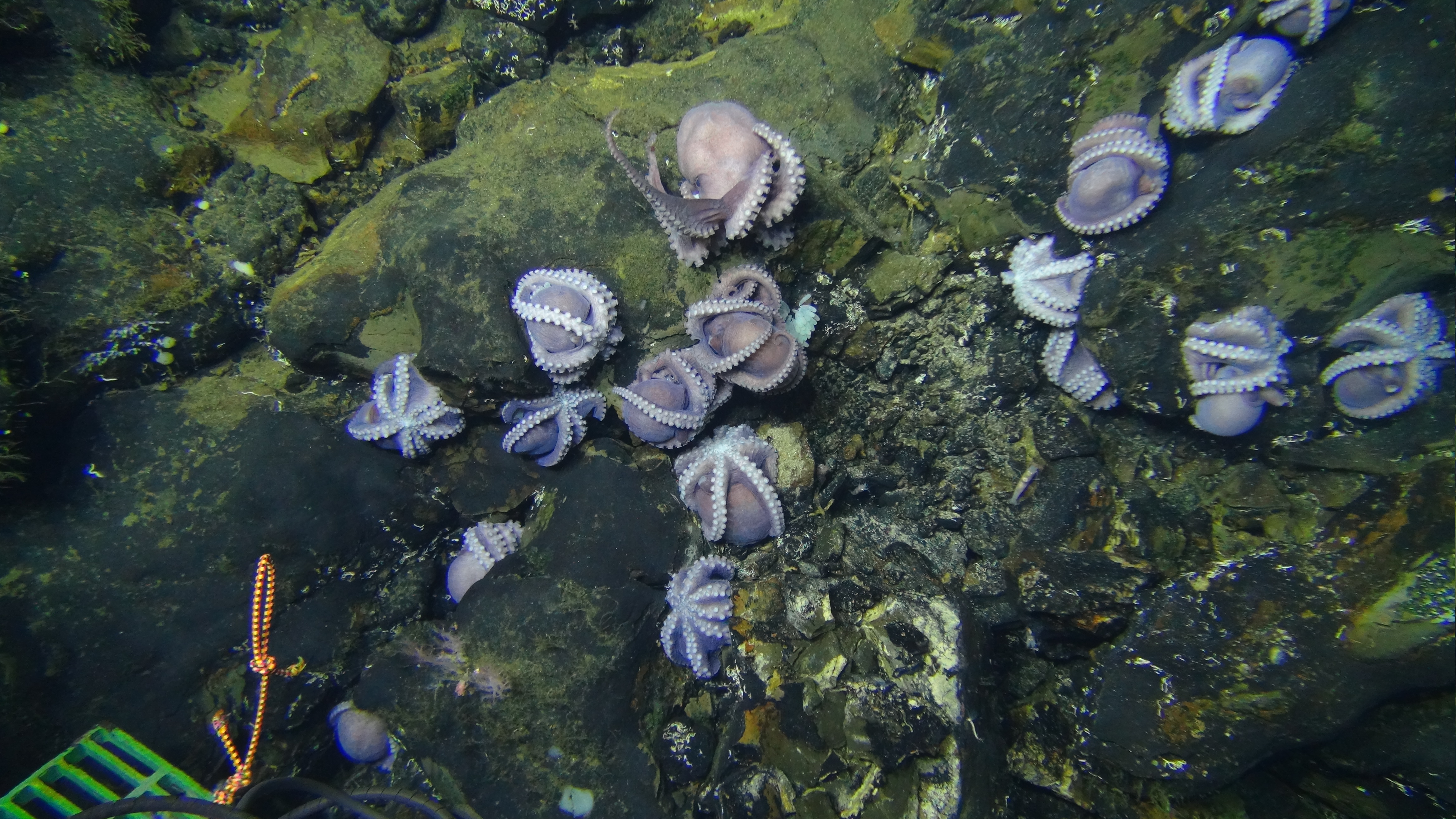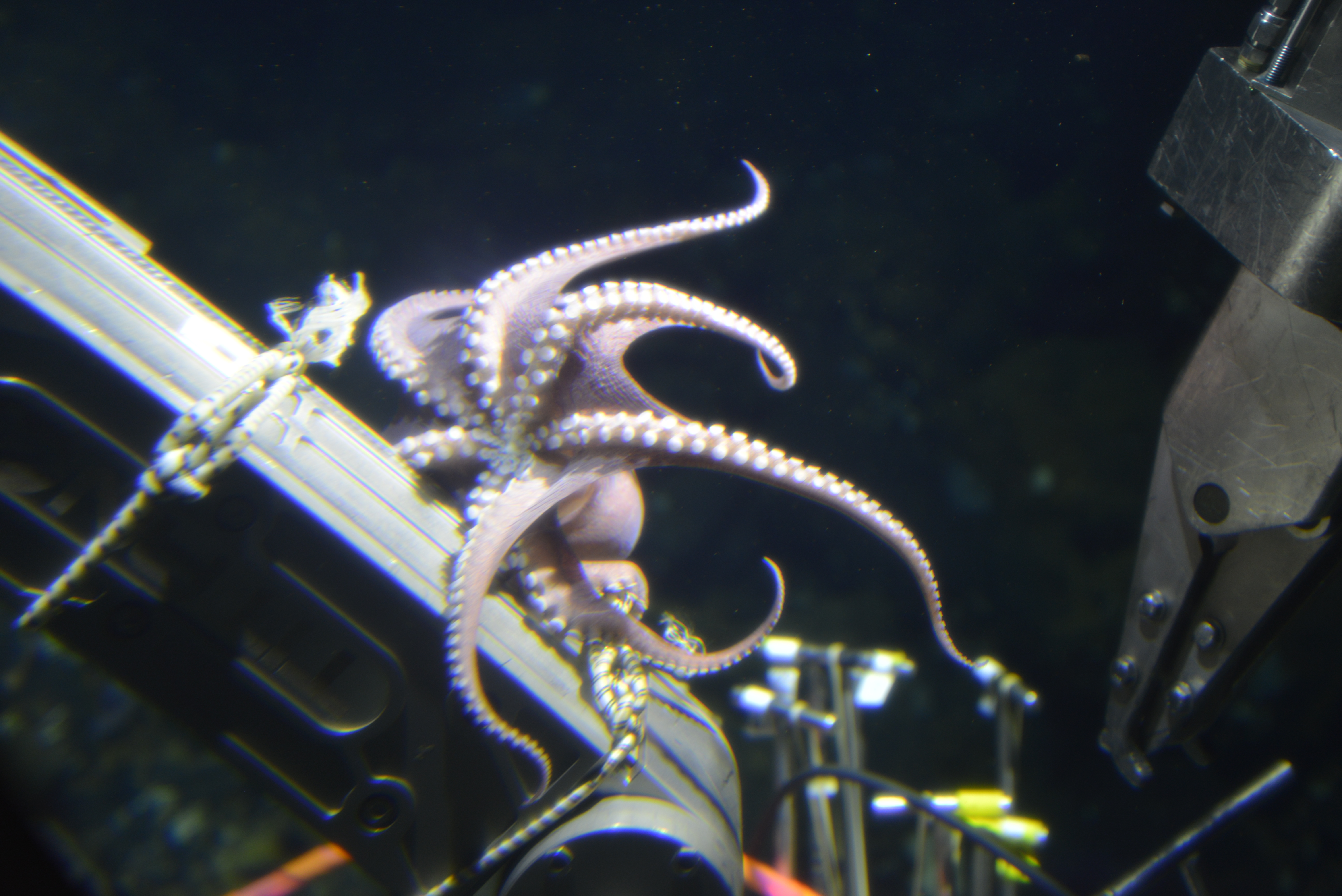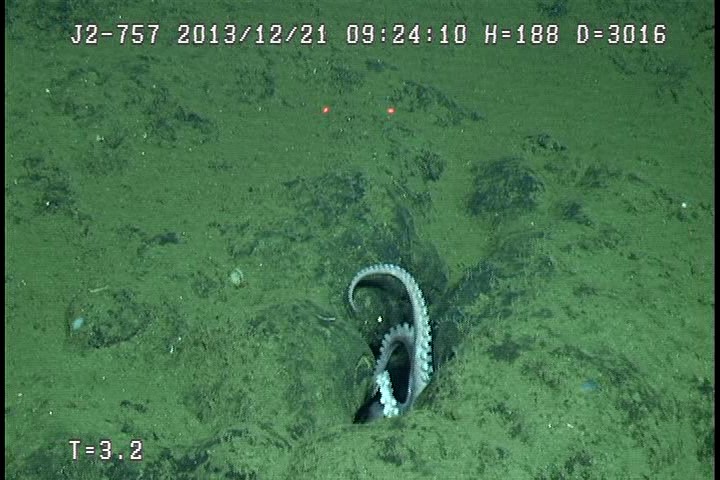
Phil Torres and Geoff Wheat
Why is this huge group of deep sea octopus moms suffocating?
Year after year, stressed out broods of octopuses kept appearing. Biologists started getting curious
The deep ocean covers around 70% of the earth’s surface, and yet this region has remained largely unexplored due to the difficulties in reaching it and dealing with the eternally dark, freezing cold, crushing conditions. This is slowly changing as technology is bringing more of the most remote parts of the earth within reach. This is exciting news for exploring the deep and gaining a better understanding of how our planet works, but adds some urgency to trying to make these discoveries before humans disturb them so much that their mysteries are lost before we ever knew they were there.
In 2013, a team of microbiologists and geochemists set out to explore the Dorado Outcrop, a submerged mountain nearly 1.9 miles below the ocean’s surface, near the coast of Costa Rica. They were searching for evidence of cool fluid venting — seawater heated to only a few degrees warmer than ambient seawater within the crust of the undersea mountain. This fluid is evidence for seawater moving through the rock of the seabed, similar to hydro-thermal vents. Underwater geysers are a source of chemical energy that provides a basis of life, just as the sun is the basis of life on the surface. At the Dorado Outcrop, scientists wanted to see if much cooler vents had the same potential for chemical-based life.
While searching for these cool fluid vents, however, the scientists found something entirely unexpected: a large cluster of octopuses sitting around, either hunkered down in crevices in the seabed or perched upside-down, with their tentacles curled up. There were also eggs, suggesting that the animals were using the site to brood.

"Hey, what's up?" "Oh nothing, just brooding."
Phil Torres and Geoff Wheat
The scientists initially didn't pay much attention beyond noting the octopuses' presence. That is until someone figured out that the animals were sitting headfirst on top of the vents the researchers had come to find. The octopuses quickly became markers to show the scientists where to point their instruments to collect data on the vents. The cluster of mother octopuses was still there when the same group of scientists returned to the Dorado Outcrop a year later, in 2014.
Over the two expeditions, the scientists collected hours of incidental video footage of these octopuses and their eggs, which would often be in the background as they focused on the cool vents, still technically the main focus of the research expeditions. This video footage caught the imagination of marine biologist Annie Hartwell, now a graduate research assistant at the University of New Hampshire. She wondered why they were there, and in such unusually large numbers. “I hit the jackpot,” she said of her research. “Curiosity and interest lined up with a hole in our knowledge.”
So Hartwell trawled through the hundreds of hours of captured video footage to catalog observations of the octopuses and eggs, also using geochemical temperature and fluid oxygen level data collected for studying the cool vents that were the original purpose of the expedition. She also contacted Janet Voight, an associate curator of zoology at The Field Museum in Chicago and an octopus expert. “My first thought when I saw the clustered octopods was they shouldn’t be there — it’s too deep and there are too many of them,” Voight said. “There tends to be less food with increasing depths in the ocean, typically there are fewer big animals like octopuses.” They expected to find the octopuses preferring the slightly warmer water, which would explain the relatively high concentrations of animals present.

Hey, c'mon, hey, get off of there we're trying to study you!"
Samuel Hulme
What they found, though, was the opposite. The octopuses (Genus Muusoctopus, species unknown) appeared stressed. All evidence seems to suggest that the warmer waters were doing more harm than good. These octopuses may be so well adapted to the cold water of the deep sea that even the slight temperature difference caused them to metabolize faster — essentially using up their scarce resources more quickly. Warmer water contains less oxygen so the octopuses were likely finding it harder to breathe.
The octopod eggs were also in trouble. None of the 186 eggs examined in the study showed signs of live octopod embryos within them, likely also because the warmer conditions were bad for them. These clutches represented the only chance at producing young that these Muusoctopus octopuses had. Octopuses generally die after their eggs hatch, having spent all their energy on brooding a single clutch and ignoring their own needs — up to and including starving themselves, rather than leave their eggs.
All of which makes their presence among the cool water vents rather inexplicable. Why choose somewhere so poor to lay your only clutch of eggs?

"Feeling stressed, just gonna hang out down here."
Anne Hartwell
The scientists, who published their findings earlier this year in the journal Deep Sea Research Part 1, think it may have something to do with the exposed rock of the seabed in the area, like islands in a sea of mud — incidentally, the very thing that attracted the geochemists and their expedition to the region in the first place.
Voight reckons that these deep-sea octopuses "are limited by the availability of exposed rocks on which to brood their eggs.” As Hartwell puts it, the octopus would likely rather not try gluing their soft eggs to mud to keep them from drifting away. The presence of this octopus community in this uncomfortable spot may also be evidence that they are a small part of a larger population in the vicinity that humans have yet to discover. Interestingly, the only other known group of deep sea octopuses (also Muusoctopus) was discovered off the coast of California in much the same sort of habitat. This similarity was one of the most interesting things for Voight: “It’s further evidence that the deep sea is not homogenous, but as complex as any area on earth.”
But, as with all deep-sea research, we just don’t know enough to do more than guess. Each new discovery leads to more questions. As Hartwell says, this kind of study “can open our eyes to what’s on the bottom of the ocean.”
